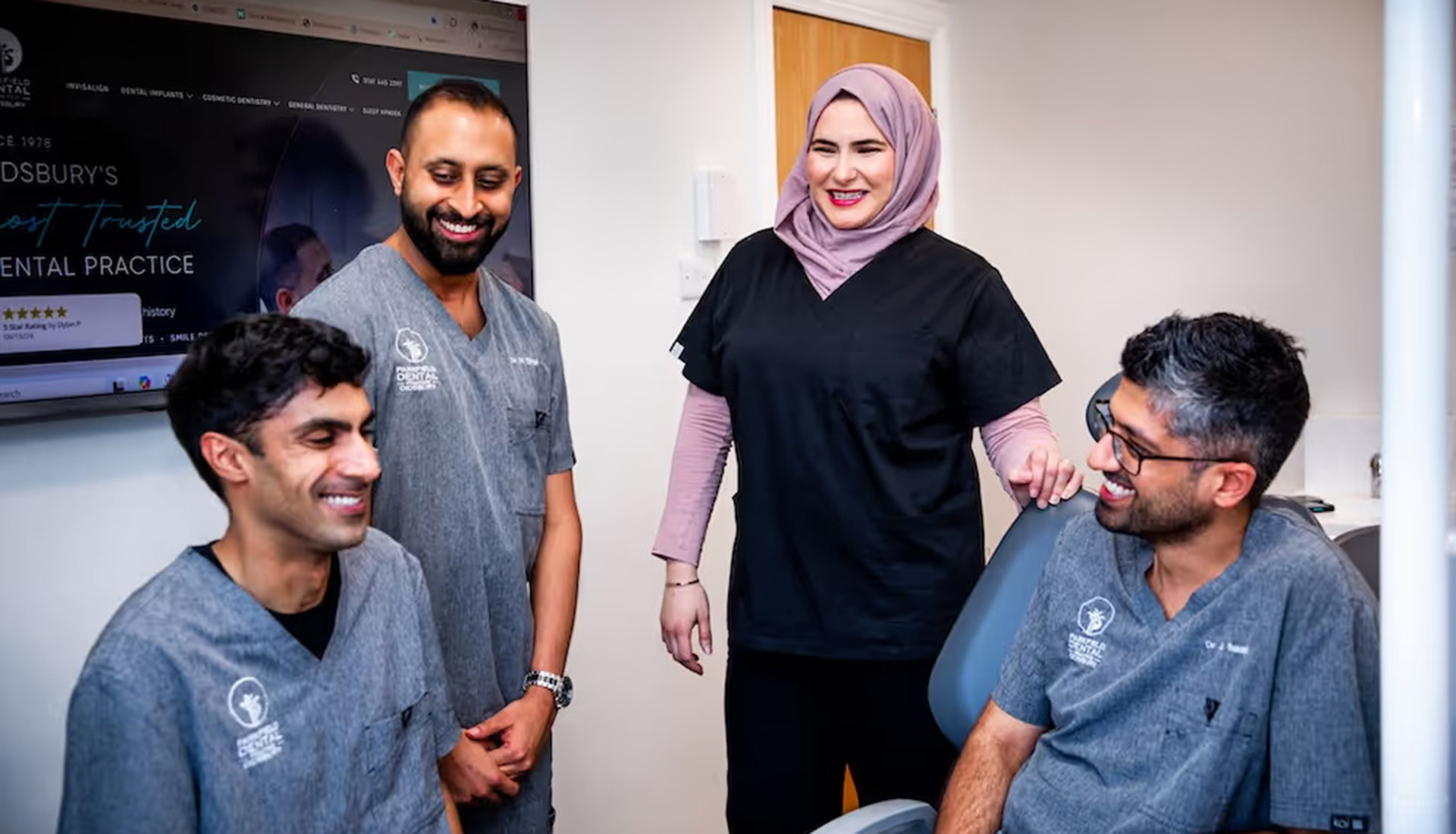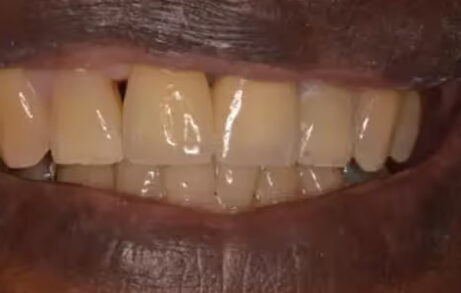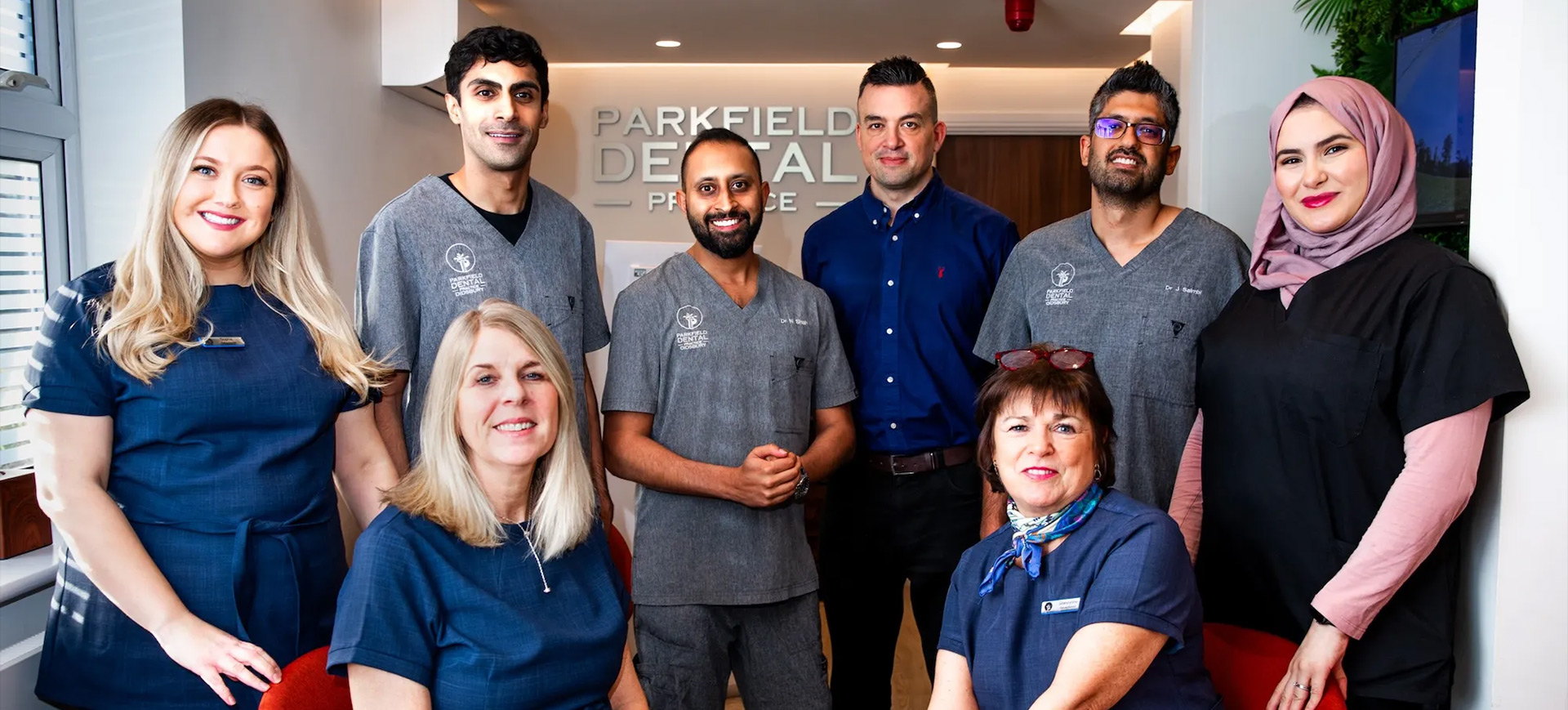
Make your smile whole again!
Time: About 1 hour or less; multiple appointments are usually required
Cost: Starting from £868 per unit
Are you tired of seeing that big empty space between your teeth?
A dental bridge could be just the thing to close the gap and give you a reason to smile again.
A dental bridge is used as a permanent replacement for one or more missing teeth and it lends both aesthetic value and structural support to your smile. It is essentially a compound restoration that is made up of multiple dental crowns fused together. The crowns at both ends of the bridge rest on existing natural teeth, and they support the false tooth that is suspended in the middle.
A bridge may be recommended if you’re missing one or more teeth. Gaps left by missing teeth eventually cause the remaining teeth to rotate or shift into the empty spaces, resulting in a bad bite. The imbalance caused by missing teeth can also lead to gum disease and temporomandibular joint (TMJ) disorders.
A dental bridge from Parkfield Dental will restore your natural bite and prevent unwanted movement of the adjacent teeth and over-eruption of the opposing teeth. Dental bridges are fixed permanently in place, so you will not need to worry about them sliding around or falling out of your mouth.
We need to check the health and function of your bite before we can recommend treatment, so we will set you up with an appointment for a comprehensive oral health examination. After one of our dentists has examined your mouth, we will go over the findings and review the recommended treatment plan with you.
First, the dentist will administer some local anaesthetic to ensure that your teeth are comfortable. Next, he or she will gently drill away the outer layer from the teeth which will be supporting your new bridge. After that, we will take an impression, or mould, of these prepared teeth so that we can cast a perfect replica as the design for your bridge. Then, we will cover your teeth with a protective temporary restoration. In the meantime, we will follow up with you via phone or WhatsApp messaging to make sure you are recovering well from your treatment.
Once your bridge is done, we will call you back in for the fitting. We will remove your temporary bridge and try on your permanent one. If everything looks and feels good, we will cement it to your teeth. You will leave our practice on this day with a complete and gorgeous new smile!
It will usually take two visits to the dentist to have a dental bridge fitted and adjusted correctly.
On your first visit preparatory work will be done, shaping the teeth for the bridge to fit on to. Your dentist will then take a mould of your teeth, which will be sent to the laboratory for the dental technician to make the bridge.
On your next visit, your dental bridge will be fitted and adjusted to ensure a correct bite. If you are happy with the way the bridge fits and looks your dental bridge will be fixed in place. If at this stage the shade or fit of the bridge is not correct, it can be sent back to the laboratory for any necessary adjustments to be made before it is fixed in place permanently.
A dental bridge will restore your natural bite and prevent unwanted movement of the adjacent teeth and over eruption of the opposing teeth. They are a very desirable alternative to a removable partial denture.
There are three main types of dental bridges which we’ll go into more detail below.
Each has their own unique qualities and at Parkfield Dental we work hard to help find you the right type of dental bridge so you can go back to being your confident self.
Traditional fixed bridges
Traditional fixed bridges are the most common type of bridge and are usually made from porcelain that is fused to metal or ceramics. Traditional fixed bridges create a ‘filler’ tooth that is supported by crowns (that go over healthy teeth) that go either side of the filler tooth to keep it in place. This type of bridge is chosen when there is a need to replace a missing tooth where there are healthy supporting teeth on either side of them. Both of the healthy teeth are reshaped and fitted with crowns to ensure that they are strong enough to support the bridge.
Cantilever bridges
The cantilever bridge is used when there are not two healthy teeth nearby that can support a traditional bridge. Sometimes it’s just not viable, medically or aesthetically to prepare both sides for a crown, for instance, if a front tooth was next to the missing tooth. Turning that front tooth into a crown would not look good, nor would it be strong enough to support the bridge. If the tooth to the side of the missing one is already supporting another dental prosthetic, restoration of that may not always be an option.
Maryland bonded bridges
A Maryland bonded bridge is used most commonly to replace front teeth and is usually made from a metal framework with porcelain fused to metal teeth. The pontic (the false tooth in the middle of the bridge) is fitted next to the healthy teeth with metal or porcelain wings on both sides of the bridge. It is a more conservative option because it doesn’t require reshaping and crowning of the healthy adjacent teeth.
Think about including a dental bridge in your next smile makeover.
If you are ready to explore the possibility of getting a dental bridge, call us today on 0161 445 2397 or book an appointment online.
There are plenty of fantastic benefits when it comes to getting a dental bridge, and at Parkfield Dental, our friendly dentists like to make sure each and every client knows about all the advantages of their cosmetic treatment and how it can improve their overall appearance.
Below are just a few benefits to undergoing this type of dental procedure:
Having a dental bridge fitted means your smile will be restored and will look like you have two rows of perfectly healthy teeth. Having your smile restored is going to give anyone a new spring in their step. A dental bridge can transform your wellbeing, confidence and overall appearance.
The materials our dental laboratories use to create your dental bridge ensure you will have a secure and stable dental implant that allows you to chew without having to worry about the tooth appliance breaking or falling out.
With the placement of a dental bridge, your mouth will be fully fitted out with two rows of healthy teeth, meaning your face can look like it used to before the dental issue arose.
Having a bridge fitted at Parkfield Dental reduces the stress on your other teeth because, when you bite down, the pressure and force will be distributed more evenly across your natural teeth and your dental bridge. This stops your healthy teeth from, in the future, suffering any cosmetic damage themselves.
Not only does a dental bridge contribute to improving your cosmetic overall appearance, but it also prevents the natural teeth on either side of the gap from moving out of position. Without a bridge, your teeth would naturally shift due to the pressures biting and chewing. Getting a bridge can help prevent unwanted tooth movement.


Because a dental implant is most commonly made of dental porcelain, a very strong material, they do not require any special care. You should still brush and floss around them as you do your natural teeth, and pay close attention to your gum health. However, because the false tooth is fused to one or more neighbouring tooth crowns, you will not be able to floss between the false tooth and its neighbours.
Our dental hygienists can show you how to properly clean your teeth and maintain a strong and healthy bridge. Our advice, in general, is that you should brush twice a day and floss then use an antiseptic mouthwash to prevent tooth decay and gum disease.
Bridges are designed to give patients a natural look. The colour of the bridge will vary based on the location of the teeth being replaced. How white the bridge is will also vary based on the structure and condition of your natural teeth.
A long time, in short. Dental bridges and other similar tooth appliances can last from 5 years to 15 years and sometimes even longer. If you visit Parkfield Dental for regular checkups and maintain good oral hygiene standards, it’s not unusual for a bridge to last longer than 10 years.
Typically, a dental bridge is made out of porcelain so that it blends in with the rest of your natural teeth.
Quite the opposite, in fact, eating with a dental bridge will make eating easier. It may take a day or two to get used to having something new in your mouth which is why we advise maybe eating soft food cut into smaller pieces.
When natural teeth are missing, speaking clearly can be difficult. The fitting and application of a dental bridge to your anterior teeth will help you speak properly.
Generally speaking, dental bridges do not hurt. Most often, your dentist will apply some local anaesthetic to the area around your missing teeth in order to prepare you for a dental bridge. It is sometimes reported that there is a little pain or sensitivity felt in the surrounding area after the anaesthetic wears off. Not all patients experience this, but if you do the good news is that this pain can be easily dealt with by over the counter pain medication. If you are worried about the pain, or have recently had dental bridges fit and are experiencing a more severe level of pain, please get in touch with us here at Parkfield Dental right away.
If you have recently had a dental bridge fitted, or are considering having the procedure, then you may be wondering if there is anything that you can do to help ensure that your dental bridge stays in excellent condition for as long as possible. The good news is that this is easy – all you need to do is to maintain excellent daily dental care and oral hygiene. This is something that we recommend for all of our patients here at Parkfield Dental, and is the best way of keeping your teeth, mouth and smile happy and healthy.
Daily dental care including both brushing and flossing, alongside the use of mouthwash, can be an excellent way to keep your dental bridge healthy and in excellent condition. We also recommend visiting us here at Parkfield Dental on a regular basis for hygiene cleanings and check-ups – most patients are recommended to come in and see us every six months or so. This allows your dental professional to keep an eye on your dental bridge!
Dental bridges are an excellent choice for anyone hoping to replace missing teeth or a missing tooth. Here at Parkfield Dental, our dentists have pursued extensive training in implantology. Dental implants are essentially considered the ‘gold standard’ when it comes to replacing teeth that have been damaged or broken, or by filling the gaps caused by missing teeth. As such, one alternative to dental bridges is dental implants – if you are interested, just get in touch with the team here at Parkfield Dental. Dentures are another excellent alternative for those who do not want to undergo dental procedures such as those for dental implants or dental bridges.
Dental bridges should last for decades without ever needing attention or repairs. However, from time to time, they can become loose or damaged. This can leave gaps under the bridge, where decay can set in and damage the surrounding teeth. This can commonly be caused by changes to your teeth alignment, as this will affect how a dental bridge fits in your mouth. Insufficient oral care can also cause dental bridges to fail.
Chips or cracks in your dental bridge are rare, but if you do notice them or experience discomfort when chewing or brushing, you should contact the team here at Parkfield Dental and we will look into it for you.
Dental bridges may loosen over time but they most certainly will not fall out. Even after a lengthy period of time, they will remain fixed in place. If your bridge does come slightly loose, our dentists here at Parkfield Dental can tighten or adjust them with ease. The materials we use will help you enjoy a secure dental bridge, which will allow you to chew and eat all the foods you want without worry of it falling out.
A dental bridge by itself will not produce a foul odour – it is bacteria that smells bad, not the equipment. If your dental bridge does not fit properly, food can get caught in the crevices and start to rot. Our dentists at Parkfield Dental will ensure your dental bridge fits properly and comfortably within your mouth, lowering the chance of this happening considerably.
To help avoid issues you can also:
The short answer is no, dental bridges cannot be whitened the same way your natural teeth can. Porcelain and acrylic are both non-porous materials, unlike your natural enamel that is made of microscopic crystals, which make it porous. The active ingredient in a tooth whitening product is usually hydrogen peroxide or carbamide peroxide. They are able to penetrate the porous enamel surface and break apart the staining agents within the tooth. They cannot do the same with a porcelain tooth, but the good news is they are less prone to staining for the exact same reason.
If desired, we highly recommend that you whiten your teeth before your dental bridge is created or put into your mouth. We can then ensure it matches the colour of your whitened teeth. If you already have a dental bridge but have the desire to whiten your teeth, we recommend replacing the bridge. Doing so will ensure the bridge is made to match the shade of your whitened teeth.

 Healthy, happy smiles start here.
Healthy, happy smiles start here.Fill in the form and our friendly team will be in touch with you momentarily
Great treatment again with Dr Shah at Parkfield Dental Practice. Lovely welcoming reception staff and I felt very confident and relaxed in the dental chair. His manner, skill and attentive approach to… Read More
Got my treatment at parkfield with Angel aligners and it’s been amazing from start to finish. The practice and staff are so good at supporting you along the way with great finished results. Would re… Read More
The communication is this practice is really good and effective. Had worries of getting extractions done but got resolved immediately. The customer service is superb with very polite staffs. Would re… Read More
The team at Parkfield dental are meticulous with their work and make you feel at ease every time you visit. I strongly recommend to choose this practice for any reason, be it regular checkups or urgen… Read More